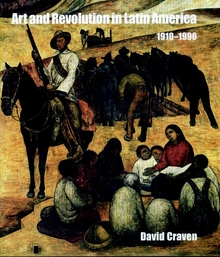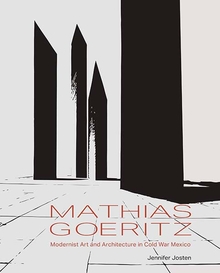Art and Revolution in Latin America, 1910-1990
WARNING
You are viewing an older version of the Yalebooks website. Please visit out new website with more updated information and a better user experience: https://www.yalebooks.com
David Craven

Read this book online via the A&AePortal, our art and architectural history eBook platform. To learn more about how to access this book, please contact us.
Out of Print
"Beautifully illustrated. . . . Thoroughly documented, well conceived and executed."—Latin Americanist
"An ambitious book, weaving political, economic, and a broad swath of cultural phenomena into the analysis of works of visual art."—Art Journal
"[A] wonderfully intricate book on a seldom discussed topic."—Library Journal
"Destined to become a classic in the field."—Arte en Colombia
"Craven's is an ambitious book, weaving political, economic, and a broad swath of cultural phenomena into the analysis of works of visual art that go continuously and very sharply in and out of focus. It is erudite, with cultural and art-historical references broadly ranging across time and space, and it is thoroughly documented with citations, some quite long, from critics, artists, and political and literary figures."—Art Journal
"Not only a valuable contribution to the scholarship because of its collection of drawings, paintings, and posters from 'las tres grandes,' namely the Mexican, Cuban, and Nicaraguan revolutions. It is also an exhaustive examination of the cultural policies employed by these transformational processes, an affirmation of the worldwide impact of the visual arts produced under their leaderships, and a defense of them as autonomous struggles. . . . Craven's artistic analysis, along with his appendices and endnotes, demonstrate a vast knowledge and are engaging to readers. His passionately committed defense of Latin American social transformations and generously wide scope are his greatest contributions to the field."—Katherine M. Hedeen, Latin American Research Review
"[A] beautifully illustrated volume. . . . Thoroughly documented, well conceived and executed."—Edward Hood, Latin Americanist
“Craven . . . begins with an examination of the origins of the modern concept of revolution and its roots in the Enlightenment ideals of the rights of man. The volume provides valuable glimpses into times of upheaval when artists believed their work held meaning for the general public and had the power to create a better future. He reveals how the revolutionary need to reinvent art and make it relevant for a specific time and place often led to innovation and helped artists avoid the trap of making art for art’s sake.”—Elizabeth Cook-Romero, The New Mexican
Publication Date: October 19, 2006
130 b/w + 65 color illus.




















